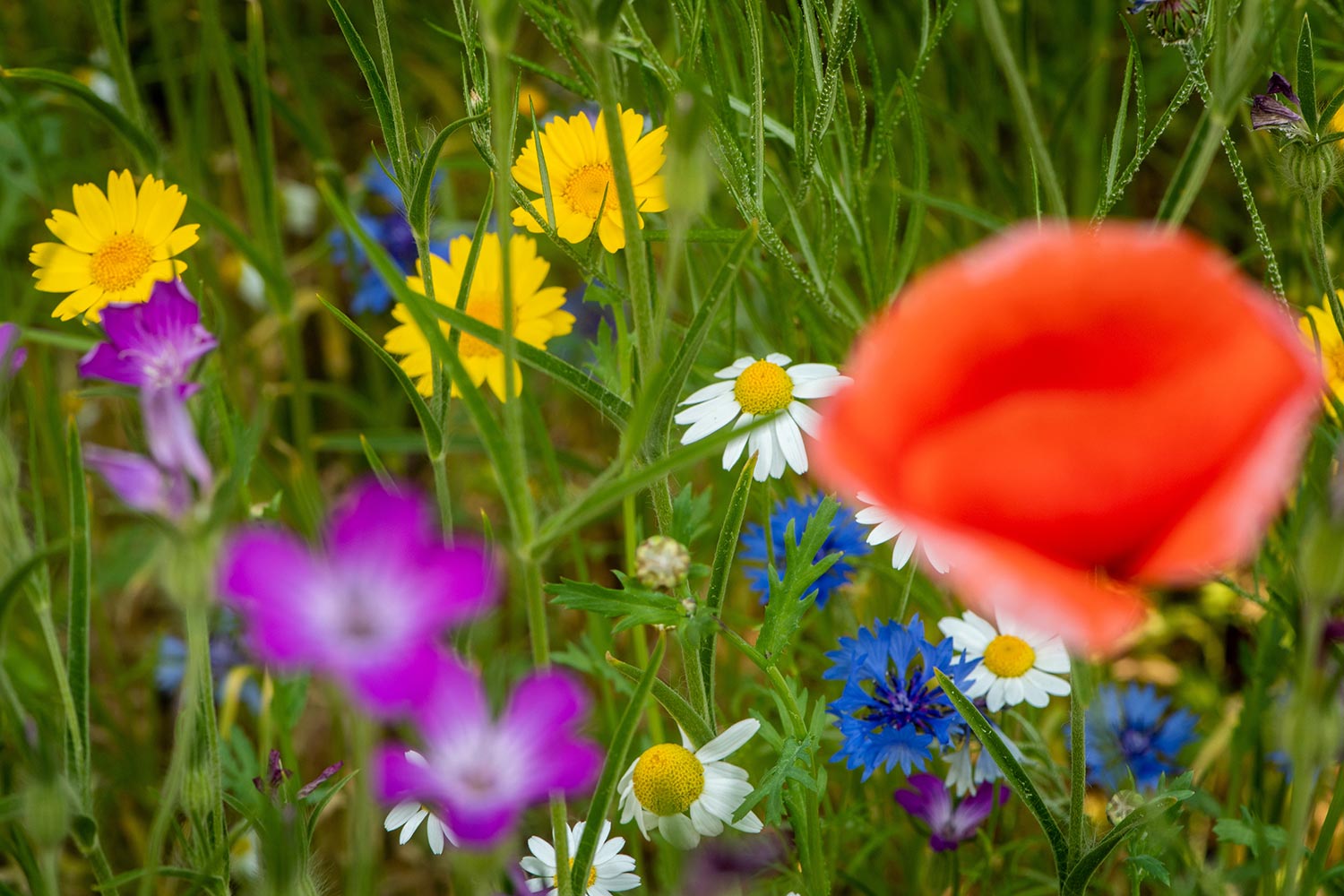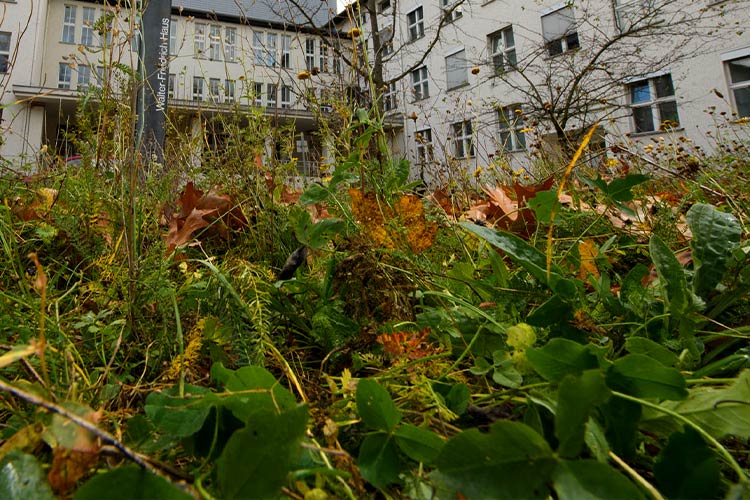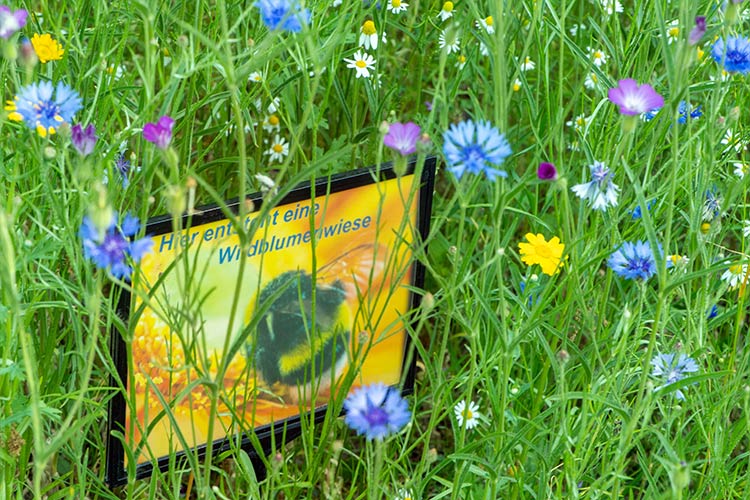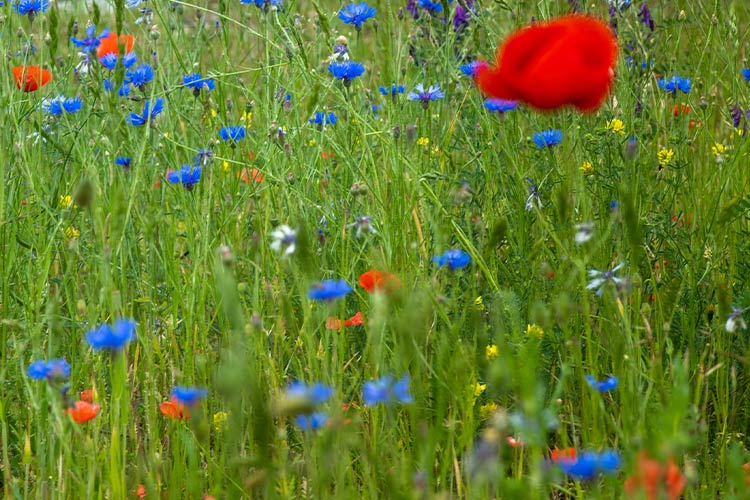21Wildflower meadow

Right next to the ginkgo is the second wildflower meadow on the tour. Here, too, a blaze of color appears from spring to summer for people and insects to enjoy. In this case, a mixture of 58 flower species called heat-loving saun has been used. These include delphinium, knapweed, meadow sage, corn poppy, mallow, clover and carnation.
This diversity of flower species is accompanied by diverse insects. These flowers have been selected as a valuable source of pollen and nectar for insect life, especially wild bees and butterflies. This abundance and diversity of insects in turn attracts birds and bats that feed on them. Even in winter, when the dead plants are left standing because they are not mowed until early spring, they attract insects that hibernate in their hollow stems, and their seed heads provide food for birds.
The range of flower and plant species and their variety of root systems help protect and aerate the soil of this meadow. Another result is to expand the types of soil fauna and microorganisms that feed on the decaying roots and litter of the flowers and plants.
Thus, this diversity of flower and plant species is not only a feast for the eyes, but it also promotes the cycle of life by increasing the kinds and abundance of animals above and below ground.
Our wildflower meadows increase biodiversity across campus. Again, please do not enter the meadow or pick any of the plants. In this way you will help prevent species loss.


